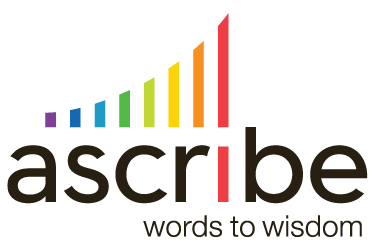How to Update, Revise, and Review Your NPS Comments
The Net Promoter Score (NPS®) is a component of the Net Promoter system developed by Bain & Company. The system is a management philosophy that prizes building passionate loyalty to the organization or brand in both customers and employees. The NPS was developed to assess that loyalty. As Bain explains,
Ideally, companies ask just a few questions in their NPS survey:
- On a 0-to-10 scale, how likely is it that you would recommend us (or this product or service) to a friend or colleague? What is the primary reason for your score?
- Why?
- What could we do better?
Responses to the first NPS question are used to indicate two things: how satisfied a business’s customers are and how likely they are to recommend the organization to others. When reviewing responses to a Net Promoter survey, Bain instructs organizations to classify each respondent into three main categories: detractors, passives, and promoters.
Customers selecting a rating from 0–6 on the survey are “detractors” who are not satisfied and will not recommend. They may even do harm to an organization’s reputation by criticizing it.
“Passives” are customers who give NPS scores of 7–8. These scores indicate customers who are neither very happy nor very unhappy. Generally, they will not harm an organization, but neither will they promote it to others.
Those customers who give NPS scores of 9–10 are considered “promoters” and are so satisfied that they are highly likely to recommend a business to others.
Calculating a business’s Net Promoter Score is simple: subtract the percentage of detractors from the percentage of promoters. The higher the score, the stronger the loyalty towards your business.
Many organizations rely on this information, watching the absolute numbers and how they change over time to keep a pulse on their customers’ experiences. They implement a process that keeps the cycle of surveying, reporting, learning, and action to build loyalty (and grow the business) very short. Repeating this cycle over time allows management teams to see quickly whether the actions they take make any difference in customer scores.
The second and third NPS questions invite respondents to provide qualitative verbatim comments explaining the quantitative number they gave in question 1. These verbatim comments can offer tremendous insight into what drives a customer’s satisfaction or dissatisfaction. This enables organizations to select the appropriate action or intervention, depending on whether the data shows they need to maintain or improve customer satisfaction.
How to update and review your NPS comments.
As mentioned above, Bain recommends a very short cycle of surveying, reviewing, learning, and acting. When using the Net Promoter system, always include the two open-ended questions “Why?” and “What can we do better?”
The process must incorporate reviewing the verbatim comments, as they are far more helpful than the score itself. Comments enable teams to unearth the root causes of a customer’s experience. The faster a team can spot failures and address them, the less damaging that failure is to their reputation and overall customer loyalty.
Assuming that the Net Promoter survey includes the suggested open-ended questions, best practices include a system for reviewing verbatim text responses. These contain essential context for the rating each customer gives – details that can help organizations identify specifically what they are doing well and where to improve.
Establishing a regular schedule makes it possible to track common themes, trends, and overall sentiment and compare experiences from various time frames.
When creating a schedule for reviewing customer experience data, emphasize vigilance. Each review should happen in regular increments and those increments should be as small as is practical. Organizations serious about building loyalty will stay on top of every report of customer experiences so they can respond quickly to address issues. Problems will arise, but responding quickly and appropriately will retain and even improve customer loyalty.
Using automated tools is by far the best practice for reviewing NPS comments. Software today offers a sustainable and efficient system to analyze and leverage the insights available from NPS surveys.
Especially for businesses conducting larger studies with massive data sets, manual review of open-ended feedback is cost-prohibitive. The software can automate the analysis and provide topics, themes, and sentiment in a fraction of the time it would take for a team of people to do the same. With that information in hand, organizations can make informed changes to enhance customer experiences. These changes may be to address a problem or to continue those elements that customers love about their experience.
Recommendations for companies reviewing comments manually.
Without an automated tool to mine and analyze NPS verbatim comments, certain steps will make this task more manageable. First, import the NPS verbatim comments into a spreadsheet.
The Net Promoter system identifies respondents as either detractor, passive, or promoter based on their quantitative response (the 0–10 ranking). Human analysts will need to review the verbatim comments within each of those categories to extract the qualitative data.
Breaking out the comments among the three groups reveals critical insight into what drives promoters to want to promote, dissatisfies the detractors, and keeps the passives neutral.
Tag or label the comments by positive or negative sentiment and by topic. Look for topics such as customer service, products, services, and the like. These topics are most likely to drive strong positive or negative sentiment.
Manual reviewers will likely find this task challenging to conduct in a consistent way for a couple of reasons. One, language contains many nuances that make it difficult to consistently categorize. Two, humans are susceptible to environmental and situational changes that affect their ability to do their work consistently (not feeling well, didn’t sleep well, room is too hot or too cold, etc.). It is possible to mitigate this when the team is committed and can agree upon a set of standards to use.
The power of the NPS verbatim comments is not in the mass of data, but in understanding the key themes or topics that customers associate with the NPS scores they give. So, the next step for teams reviewing these comments is to identify the themes in the data.
Naturally, in the process of tagging positive or negative sentiment and topics, themes will emerge. Another way to look for themes is to look at the use of word repetition. Customers will often repeat words in their comments to express how they feel about the organization. Highlight repeated words to see if any new themes emerge.
Sometimes, the data will lend itself to a quick overview – looking over the tags or labels assigned in the previous step reveals all needed insights. Other times, teams will need to spend time conducting deeper analysis into the topics and sentiment to uncover themes and determine whether those themes vary with different segments of respondents.
Many businesses offer different types of service, a range of locations, or other variations that could affect a customer’s experience. If this applies, grouping responses by those categories can help teams find themes that only appear within certain segments. Different customers may feel completely differently about the same topic, so be sure to also look at the sentiment within these specific groups of responses.
The most important reason to analyze verbatim comments collected during Net Promoter surveys is to find the insights needed to take action. Reviewing the results in a timely manner with the team who is responsible for customer experience assures that the right people interpret the data, form conclusions, and choose appropriate actions to improve loyalty.
Including customer experience teams in the review step is another best practice. Customer experience teams are best positioned to decide what is actionable information and useful feedback from the survey. They know the employees involved in customer-facing interactions, have authority to implement changes that will improve customer experiences, and are biased toward action.

Create an action plan for addressing issues.
As mentioned above, Bain recommends a very short cycle of surveying, reviewing, learning, and acting. When using the Net Promoter system, always include the two open-ended questions “Why?” and “What can we do better?”
The process must incorporate reviewing the verbatim comments, as they are far more helpful than the score itself. Comments enable teams to unearth the root causes of a customer’s experience. The faster a team can spot failures and address them, the less damaging that failure is to their reputation and overall customer loyalty.
Discover emerging trends and other benefits of reviewing NPS comments.
Once you score the NPS data, reviewing the verbatim comments submitted with NPS surveys can help teams discover emerging trends among their customers. One common instance when this could prove useful is during the launch of a new product or service. With an efficient system in place to review open-ended responses to questions in NPS surveys, teams can quickly uncover whether the new offer has significant flaws or delights consumers in unexpected ways. A new theme appearing in conjunction with the new offer provides important clues about customer experiences of that offer.
The comments accompanying NPS scores help explain any changes that appear from study to study. If scores begin to trend up or down, a system that reviews the comments can help identify key themes and the sentiments (emotions) that drive the scores. These shifts can also signal whether changes implemented previously are improving the experience or missing the mark.
A robust tool like Ascribe’s CX Inspector can filter results to show whether scores, sentiments, and themes vary with groups of people, locations, times, etc. This can help teams see whether they have improved satisfaction in one group while damaging it with another, if certain locations or services satisfy better than others, and which issues seem to push scores up or down the most.
For example, when organizations make pricing changes, they can determine through their NPS surveys if the change is having a positive or negative impact on customer satisfaction – if they ask open-ended questions. Allowing consumers to share their thoughts and feelings and using an automated tool to analyze the comments will help organizations glean the insights they need on pricing faster and more efficiently.
This same approach – real-time automated analysis of NPS verbatim comments – can also identify whether the issue is one of value rather than of price. This may be just as important for many organizations. Text analytics solutions are able to quickly uncover invaluable insights and track trends in NPS verbatim comments, making the Net Promoter system as a whole more robust.
Choosing an automated tool to help review NPS comments.
Smaller companies may receive far more NPS verbatim comments than they can handle when analyzing manually. Depending on the number and frequency of comments, they may lack the time or manpower to review internally within the desired time frame. Thankfully, text analytics software is reasonably priced and available to organizations of all sizes. By using software to categorize and reveal the key topics and sentiment of customer feedback related to their NPS score, businesses can quickly act on the data, instead of spending their time analyzing the data.
Ascribe is one such text analytics software provider. Ascribe’s suite of text analytics tools analyze and visualize verbatim comments from a variety of sources including NPS surveys. Using one of Ascribe’s text analytics software tools enables teams to easily and quickly extract consumer insights, and to filter the results (for example, by promoters, passives, and detractors). This software enables organizations to identify specifically what’s needed to enhance the customer experience. Ascribe makes it easy to integrate NPS verbatim comments into a broader collection of useful customer feedback.

Final NPS comments recommendations.
Net Promoter organizations of all sizes will only see improvement in customer loyalty and experience by implementing a short cycle of collecting, analyzing, and acting on insights from Net Promoter surveys and verbatim comments.
Start by simply scoring the NPS question, then categorizing the NPS verbatim comments that come in based on topic, sentiment, and customer group (region, service received, etc.). This will help identify key themes and initial theories on why the NPS score is what it is.
When the data set becomes too large to review manually in a timely manner, select a text analytics solution like Ascribe’s CX Inspector with X-Score™ to analyze the data and generate reports for the customer experience team. Then, regardless of whether a manual or automated system processes the data, create an action plan to address issues and build on successes. Finally, collect new customer feedback to measure the results of the action plan and identify any new trends or themes that require attention.
